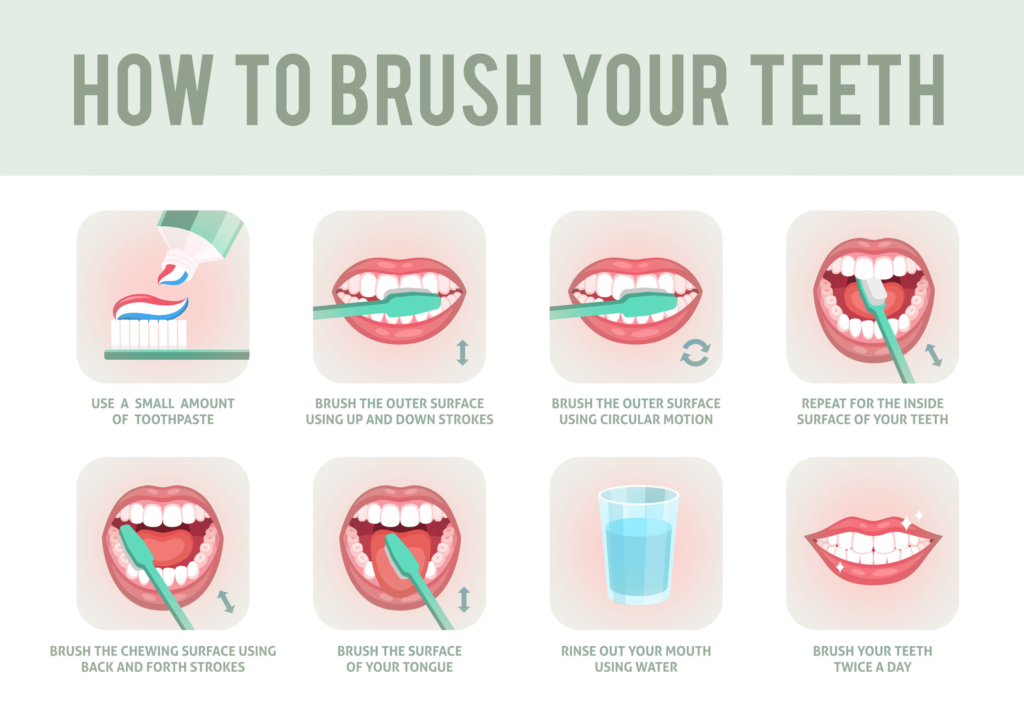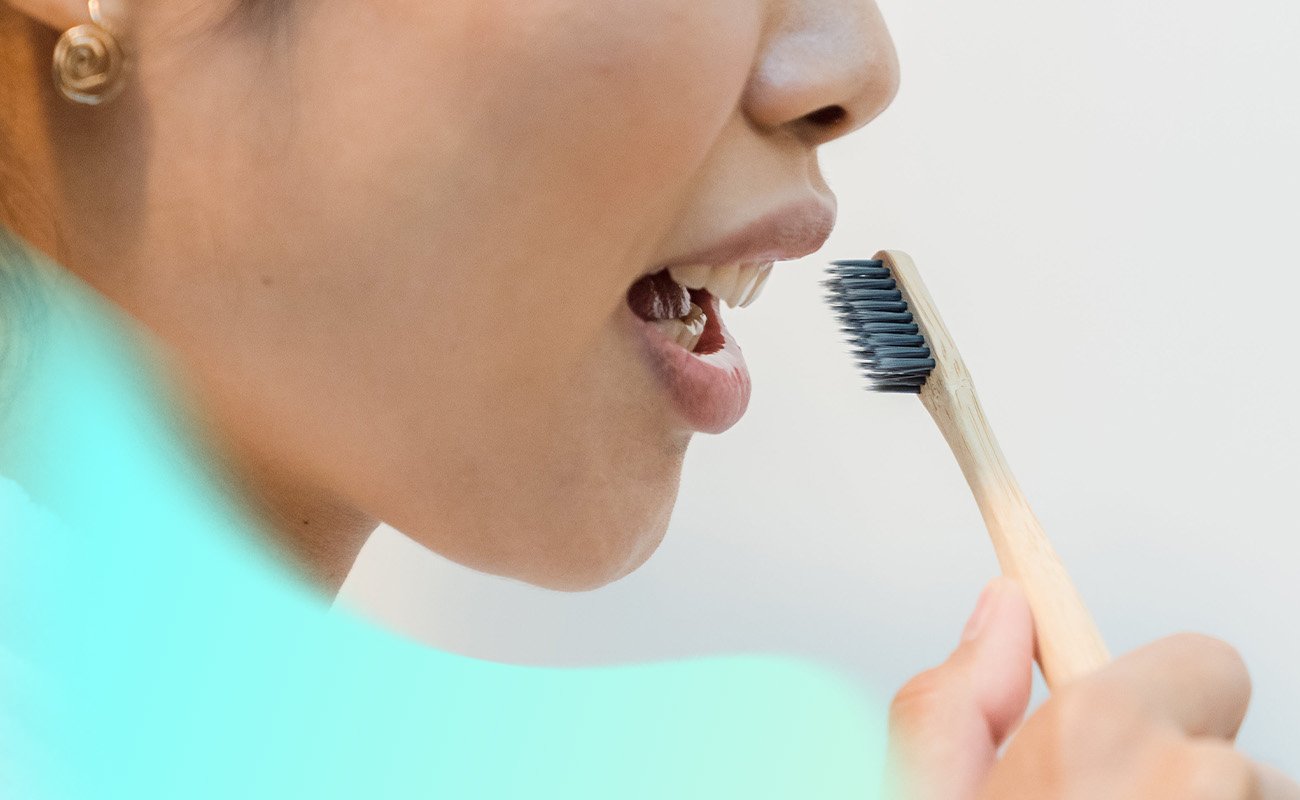Common misconceptions in oral hygiene can mislead people to believe that brushing teeth is the only necessary step for good oral care, or that mouthwash alone can clean the entire mouth. These myths undermine the importance of addressing the entire oral cavity.
Effective dental hygiene is not limited to brushing the teeth. Important areas such as the tongue, palate, and gumline are frequently missed, which can result in issues like bad breath and tooth decay.
This article will concentrate on the palate, highlighting the potential problems of not cleaning it properly. We’ll also explain the appropriate method to clean the palate and describe the steps for proper oral hygiene.
The Anatomy of the Palate
The palate is the structure that forms the roof of the mouth, separating the oral and nasal cavities. It is divided into two parts: the hard palate and the soft palate. The hard palate, situated at the front, is composed of bone and is covered by a thin layer of skin. It provides a stable platform for the tongue during eating.
Behind the hard palate is the soft palate, a muscular region that concludes with the uvula, the small tissue that hangs at the back of the mouth. The soft palate is instrumental in functions like swallowing and speaking because it can move to close off the nasal passages. Both areas of the palate have a mucosal lining and contain glands that produce mucus, which helps in moistening food.
Why You Should Brush the Roof of Your Mouth
After learning about the anatomy of the palate, it becomes clear that including the roof of your mouth in your daily brushing routine is important. Let’s explore the reasons for brushing the roof of your mouth regularly.
Reduction of Bacteria That Might Lead to Bad Breath
Brushing the roof of your mouth helps in reducing the bacteria responsible for bad breath or halitosis. The tongue harbors bacteria that produce sulfur compounds, often causing morning breath. Thoroughly cleaning the roof of your mouth alongside the tongue eliminates these odor-causing bacteria, promoting fresher breath.
Potential Decrease in the Risk of Oral Infections
Although the tissue on the roof of the mouth is tough, it’s still prone to injury from hot or crunchy foods. Minimizing the bacteria in this area can potentially reduce the risk of oral infections that may arise from open sores or cuts on the palate.
See also: Does a Root Canal Hurt with Laughing Gas?
Removal of Food Debris
Brushing the palate helps remove food debris that may get trapped in its grooves and crevices. This reduces the risk of bacterial growth and associated oral health problems.
Contribution to a Comprehensive Oral Hygiene Routine
Including the palate in your brushing routine ensures that all parts of the mouth are addressed, leading to a truly comprehensive oral hygiene approach. By brushing the palate, you actively work to reduce overlooked bacterial colonies and contribute to the overall health of the mouth, which can have cascading benefits for overall oral health.
How to Properly Brush the Palate
After learning why cleaning the palate is important, let’s explore the correct technique to ensure oral health.
Use a Soft-Bristled Toothbrush
Use a soft-bristled toothbrush when brushing the roof of your mouth. This helps avoid discomfort and potential damage to the delicate tissues at the top of your mouth.
Use Sweeping Motions from Back to Front
Use gentle, sweeping motions to brush the roof of your mouth. Start at the back and move your toothbrush to the front. This helps efficiently clean the area without causing irritation or abrasion to the palate.
See also: Vitamin Deficiency & Teeth Discoloration: The Unseen Link
Ensure to Rinse Thoroughly Afterward
After brushing the roof of your mouth, rinse your mouth thoroughly. This helps to remove debris and bacteria dislodged during brushing. Swish water or mouthwash around your mouth for a few seconds, then spit it out to complete the process.
Brush the Roof of Your Mouth Regularly
Brushing the roof of your mouth, or the palate, should be a part of your daily oral hygiene routine. It’s advisable to brush the palate at least once a day, typically during your morning or evening brushing session. This ensures that bacteria buildup on the palate is minimized, aiding in overall oral health and fresh breath.
Proper Dental Hygiene Step by Step

After exploring how to brush the palate, let’s look at a broader step-by-step approach to overall dental care.
Brushing the Tongue, Cheeks, and Palate Along With the Teeth
Proper dental hygiene involves a detailed cleaning routine for the entire mouth. After brushing your teeth, it’s important to clean the tongue by brushing it from the back to the front, which helps in removing bacteria and food particles. Similarly, brushing the insides of the cheeks aids in getting rid of any leftover plaque. The routine should be completed by brushing the palate.
Flossing and Using Mouthwash as Additional Steps
Flossing is an integral step in dental hygiene as it removes food particles and plaque from between the teeth that a toothbrush might not reach. It helps prevent cavities and gum diseases that often start between the teeth. Following flossing, using mouthwash provides an extra layer of protection. Mouthwash can reach areas of the mouth that brushing and flossing might miss, and it helps reduce bacteria that cause bad breath and potential gum problems. Together, these steps ensure a thorough cleaning for optimal oral health.
Regular Dental Check-Ups to Ensure Optimal Oral Health
Scheduling regular dental check-ups is an essential part of maintaining proper oral hygiene. These visits allow dentists to detect issues like cavities, gum disease, or other oral abnormalities early on. Additionally, professional cleanings during these appointments help remove the tartar buildup that regular brushing might cause.
Should You Brush the Roof of Your Mouth?
In conclusion, our oral health is a reflection of our overall well-being. While many focus on teeth and gums, the entirety of our mouth—including oft-neglected areas like the palate—deserves attention. Properly cleaning the roof of our mouth can deter unwanted complications and contribute to fresher breath and healthier living. Remember, comprehensive oral care doesn’t stop with brushing teeth alone; it’s a holistic practice that, when done diligently, can have lasting benefits for both our dental and general health.
Frequently Asked Questions
Why is the roof of my mouth swollen?
The swelling of the roof of the mouth can result from various causes. Allergic reactions, burns from hot food, infections, or trauma can lead to inflammation. Oral conditions like mucoceles, canker sores, or dental abscesses might also contribute. Less commonly, certain systemic conditions or diseases can manifest as swelling in the oral cavity. If the swelling persists, causes discomfort, or is accompanied by other symptoms, it’s important to consult a healthcare professional for a proper diagnosis and treatment.
Why does the roof of my mouth feel swollen?
The sensation of a swollen roof of the mouth can arise from various factors. Common causes include burns from hot beverages or food, allergic reactions, infections, or trauma. Other oral conditions like canker sores, mucoceles, or dental issues can also contribute.
Food stuck in the roof of mouth – what to do?
If food gets stuck on the roof of your mouth, first try swishing water around your mouth to loosen it. Using a soft toothbrush, gently brush the area to remove the debris. Alternatively, try using dental floss or a flossing tool to dislodge trapped food particles. Avoid using sharp objects as they can cause injury. If the issue persists, consult a dentist.
Tortilla chip stuck in the roof of mouth – what to do?
If a tortilla chip is stuck in the roof of your mouth, begin by rinsing with warm water to soften the chip. Gently use your tongue or the back of a toothbrush to dislodge it. Refrain from pushing too hard to avoid further injury. If it remains stuck or causes pain, it’s best to consult a dentist to safely remove it.
Sources
https://www.mayoclinic.org/healthy-lifestyle/adult-health/in-depth/dental/art-20047475

